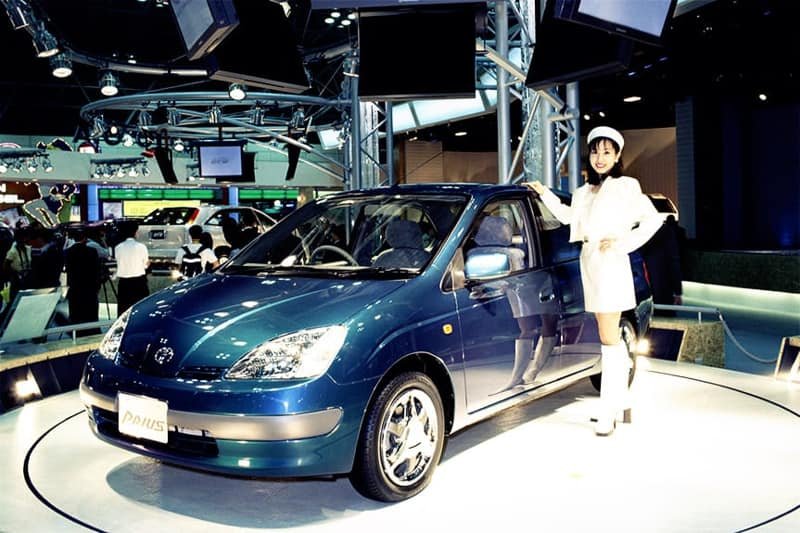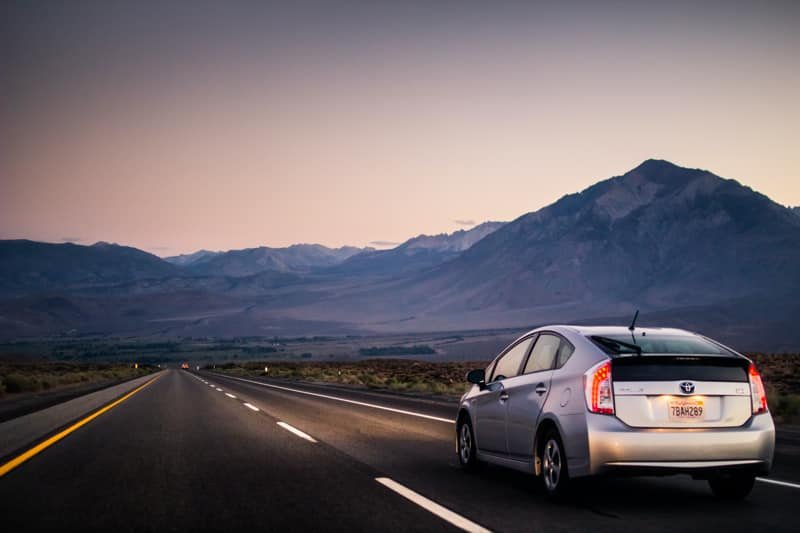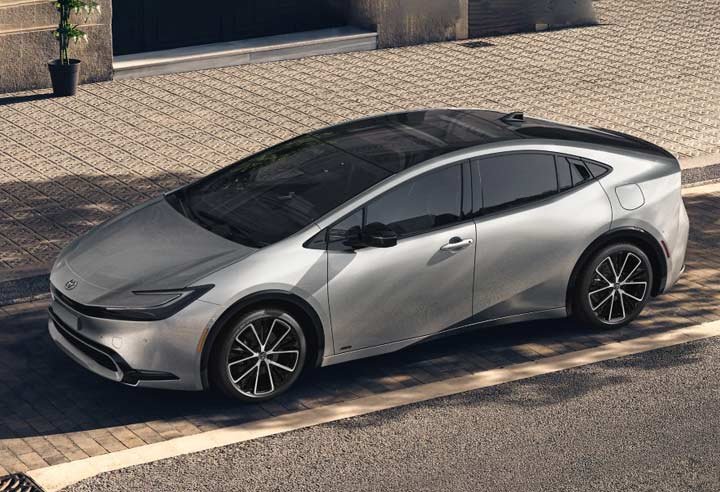The Toyota Prius was the world’s first petrol-electric hybrid vehicle produced for the masses. Back in ’97, Toyota put years of effort into it, five to be exact, to make this low-emission car for families finally a reality.
Though, here’s an interesting Prius fact—Toyota didn’t invent hybrids. Dual-engine vehicles, electric plus internal combustion, existed since 1898. Toyota just cracked the engineering problems that had held mass production back. Especially figuring out how to make the battery last as long as the other car parts was no small feat.
The Prius’s XW10 chassis housed the Toyota Hybrid System, packing everything into a regular engine bay. Under the hood, it had a 1.5-liter four-cylinder engine plus a strong electric motor. And a durable nickel-metal hydride battery, hidden behind the back seats.
Also Read: Check Hybrid System Prius – A Comprehensive Guide to Diagnosis and Repair
People in Japan loved it instantly. By 2000, Toyota ramped up production, ready to introduce it worldwide in the new XW11.
14 Surprising Toyota Prius Facts
With the recent changes, it makes sense to cover some top facts about the Toyota Prius. As the car prepares to turn a new corner, it is essential to remember what makes it so unique for many.
Prius Facts: First Generation (XW10; 1997)

The Toyota Prius is a real engine behind a true revolution in the industry.
1. Toyota Prius is a green car
When it appeared on the market, it was the world’s cleanest car because of its focus on reducing CO2 and other harmful emissions. The years have passed, but the Prius has stayed the same in this area.
The Toyota Prius Prime was named the Greenest Car in the world by the American Council for an Energy-Efficient Economy (ACEEE) in 2022.
It is a huge accomplishment because over 1,000 cars were reviewed for the study. The Prius remains the leader of its lane twenty-five years after starting this spectacular journey.
2. Prius gets lighter
For the Prius, things like weight cannot be ignored. Since the very beginning, Toyota has made a concerted effort to cover as much ground as possible and to leave little to luck.
The company worked hard to reduce the weight of the cars from the first generation. For example, the rear window glass was thinner, and high-tensile steel was used quite a bit.
In the past two decades, the weight variation from the different models has never gone over 10%. This illustrates a particular commitment to the issue that is more constant and linear than with other companies.
Second Generation (XW20; 2003)

The Prius has always had the environment as a top priority.
3. Prius impresses in terms of emissions regulations
Thanks to the generation, Toyota took this commitment to the next level. Moreover, with this era, the Toyota Prius cemented its place in the industry and proved that its initial success was never a fluke.
This Prius was the first car to be in compliance with the tough emissions regulations in countries like the US and Japan. It also hit the mark in Europe.
4. Prius keeps you cool in the summer
The second generation of Prius introduced an air-conditioning system that was revolutionary at the time. It turned the page on the old way of doing things.
2003 marked the end of Toyota’s reliance on the petrol engine, and the hybrid battery came into the picture. The first air-conditioning system meant the vehicle’s interior could remain cool when the engine was off.
Toyota is not backing down when it comes to improving this technology. The Prius models from 2010 to 2015 are considered some of the best cars to stay cool in hot summer weather.
Third Generation (XW30; 2009)

The innovation continued when this generation arrived on the market in 2009.
5. Prius reduces maintenance costs
The drive belts for the powertrain were abandoned for this era. This means fewer maintenance costs and more reliability.
The brake regeneration system also took the brake pads to a new place. This kind of feature is very popular with Prius owners. Most of them say that they can go over 100,000 miles without needing to make a change.
The 2023 Toyota Prius stays true to the creative spirit and makes braking even smoother through the advanced adaptive cruise control. Jumpstarting the Prius has also become easier than before with the standard battery now located under the hood.
6. Prius has longevity
Thanks to the third generation, the Prius became the go-to hybrid vehicle for Toyota. After the launch of this new era, the Prius represented 70% of the 1.7 million units sold around the globe. That number eventually grew to 3.5 million.
This generation left an indelible mark on the automobile industry. It came out on top of the “Best Value” category, according to Consumer Reports. This was done two years in a row, in 2012 and 2013.
Although a few years have passed, the reports still tell the same story for the Prius. To back this point, in 2019, American drivers ranked the Toyota Prius as the second longest-kept car. This made it one of the most dependable used cars of its time.
Fourth Generation (XW50; 2015)

This generation first hit the market in 2015 and went through a facelift in 2018.
7. Toyota Prius lowers the center of gravity
This is the first series to use the Toyota New Global Architecture (TNGA) modular platform.
This change corresponds to more rigidity and a lower center of gravity. Toyota values this progress a lot, and it still plays a central role in newer models.
8. Toyota Prius opts for smaller batteries
The period also opened the door for nickel-metal hydride batteries, which are smaller and more powerful. They also charge way faster than their predecessors and can last longer.
This new direction confirms Toyota’s intentions to stay way ahead when it comes to progress and the advancement of technology.
Fifth Generation (XW60; 2022)

Toyota’s latest Prius was unveiled back in late 2022 in Japan and then made its way to the UK in early 2023. And let me tell you, this new look takes that unique shape it’s known for and steps it up a notch—super sharp if you ask me. Probably, the best design Toyota’s given the Prius ever, honestly, and it even rivals others in its category when it comes to top-looking styles. Under the hood, they reworked it on Toyota’s newer TNGA platform, running on their fifth-generation hybrid system. You have options, too: classic hybrid or plug-in.
9. Prius focuses on results
The new Prius will be available in Japan, US, and Europe. It will be replaced by the Corolla Hatchback Hybrid in the United Kingdom, Australia, and New Zealand. Poor sales in those areas are responsible for this move.
However, supporters can still count on Toyota to deliver. The price tag remains reasonable at around $29,000.
10. 2023 Prius is really smooth
The Toyota Prius is not giving up on being one of the smoothest hybrid vehicles on the market. In order to make your rides as comfortable as possible, the company came up with new suspension parts in several places.
It also retooled a few structural elements. The steering is not a hassle and is entirely on point.
11. This Toyota Delivers Outstanding Fuel Efficiency

Thanks to its ingenious hybrid system, the 2024 Prius achieved remarkable fuel efficiency, delivering over 56 MPG on a combined cycle. This made it an excellent choice for individuals who had long daily commutes. As is typical with hybrids, the Prius was also highly efficient in city driving, where lower speeds allowed for more battery-only operation.
This feature made the Prius especially attractive to urban commuters looking for a hybrid vehicle. On longer highway trips, efficiency dropped slightly as the engine had to assist the electric motor. However, this series-based operation provided the Prius with enough power to be comfortable on freeways as well. The fuel efficiency makes it a perfect choice for camper conversion using different Prius mods.
12. Versatility Is One of Its Greatest Strengths
The Prius came in different body styles called the Prius V and the Prius C. This made it adaptable to various needs and preferences. The V version was for those needing more space than the standard Prius, while the C version was for those preferring a smaller car. The range of variants ensured there was a Prius for everyone.
This broadened its appeal, boosting sales significantly. However, not all body styles were available in every market. Availability was based on anticipated demand. Markets needing larger cars received the V version, while those with narrower roads received the C version. This strategy made Prius a global product, suitable for all markets.
13. Hollywood’s Sustainable Ride
In Hollywood, the Prius started catching on big time. Seemed like every celebrity was jumping on the bandwagon, picking it up as their “I care about the planet” vehicle. Around the early 2000s, it practically screamed eco-awareness. Bet you’ve seen the likes of Leonardo DiCaprio, Cameron Diaz, or maybe even Natalie Portman taking theirs for a spin. And it wasn’t just them; we’re talking big names—Orlando Bloom, Julia Roberts, Brad Pitt, all in on the Prius action.
The Prius even made it to the big screen, popping up in flicks like The Other Guys, La La Land, and Looper. Not bad for a hybrid, right?
14. The Prius Name Story
Prius, a name you’d probably heard, ain’t just any old name. Toyota didn’t just slap it together—they really dug deep, looking into everything from the design itself to even the smallest details of what to call it. Now, when you look at its design, you can practically see the effort in each curve. But you know what’s funny? The story behind the name is kind of forgotten now, like lost in time’s dust. So let’s bring it back—“Prius” actually means “ahead of time” in Latin. Looking back, I can’t think of anything more fitting for this 1997 hybrid marvel.
Bottom line
Those Prius facts reaffirm why it stands apart in an ever-changing market. Toyota embraces progress and forward-looking technology faster than many of its competitors.
This focus on the future helps set trends with the Prius instead of following them. The customer is a big winner thanks to this unique sense of innovation.
With the fifth generation, the Toyota Prius continues on the same path by making an attractive and faster car that focuses on fuel efficiency.
The brand is also embracing a new identity by trying to be a “cool car” and relying less on being serious. The changes prove that there is always room to grow, even when you are ahead.
